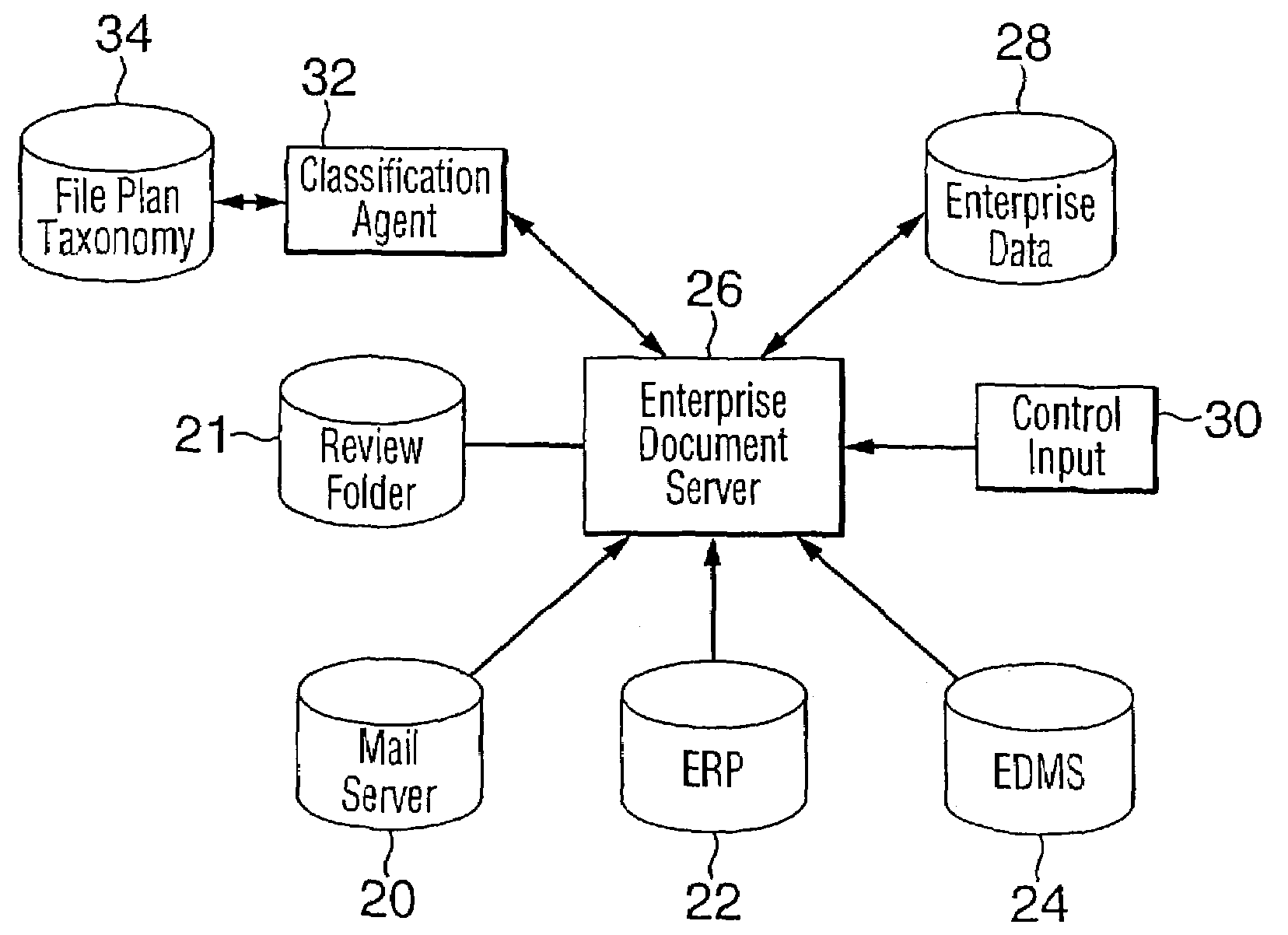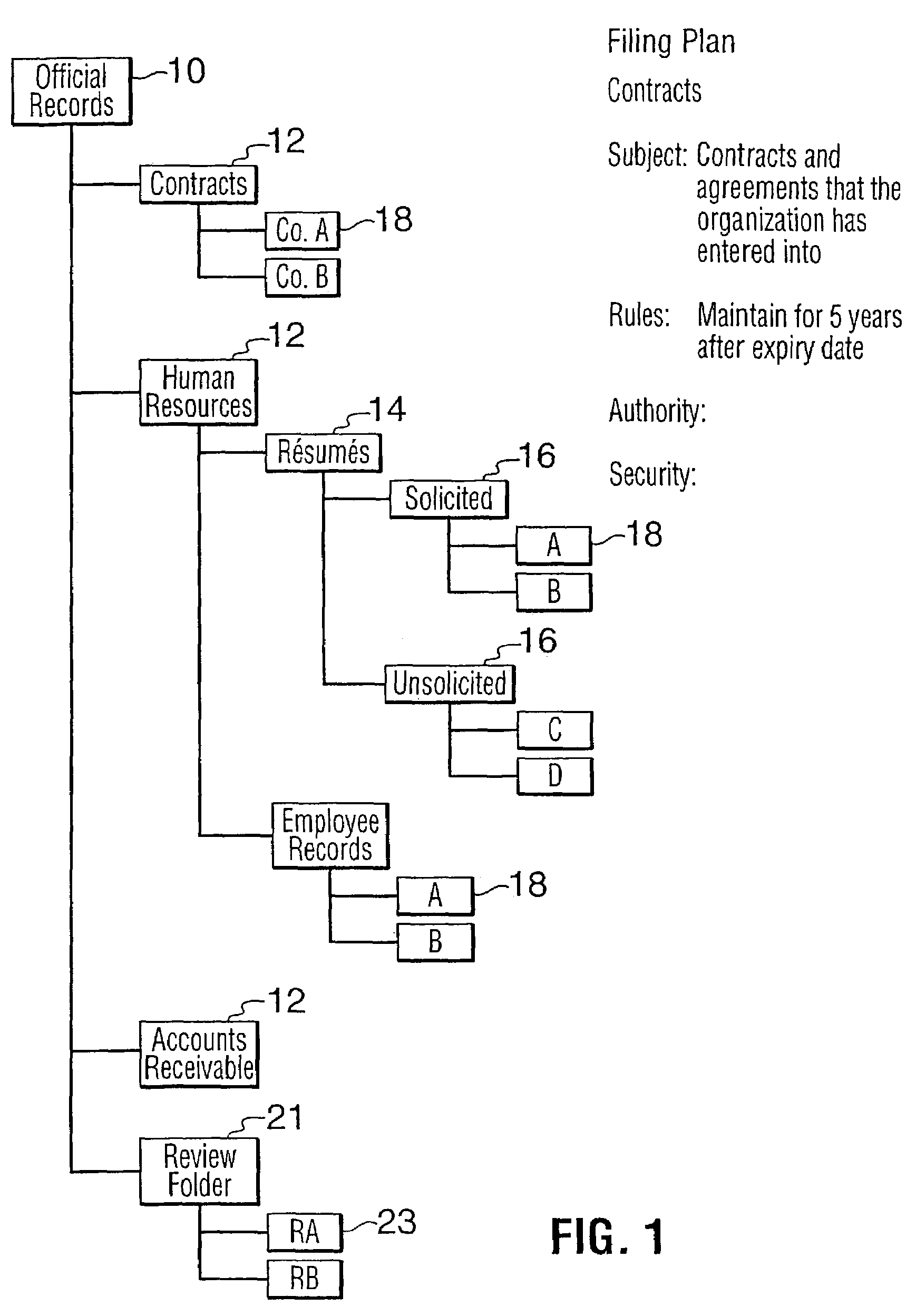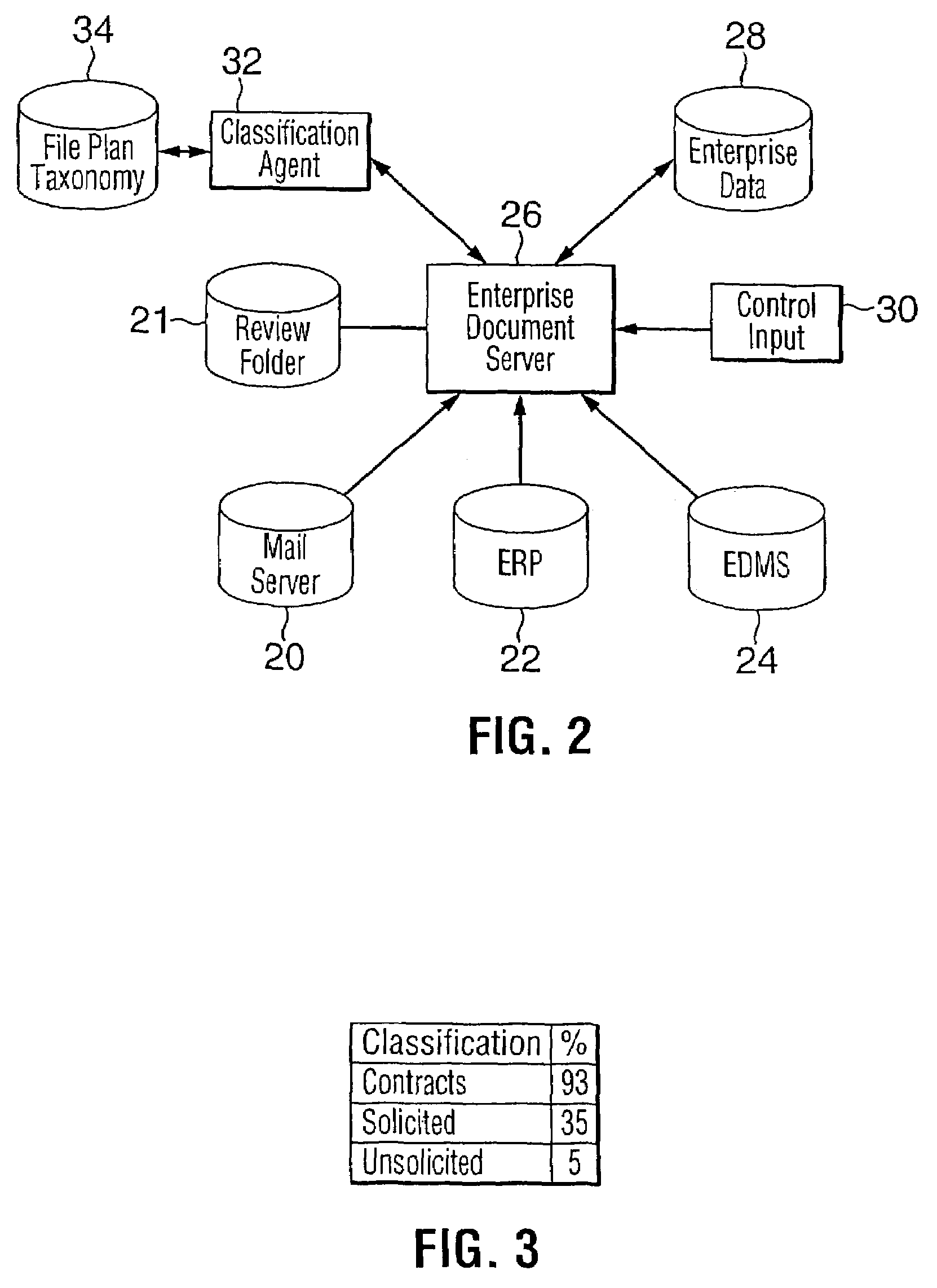Computer readable electronic records automated classification system
a computer-readable electronic record and automatic classification technology, applied in the field of data processing, can solve the problems of missing classification, missing important documents, and missing documents, and document misplacement in the enterprise filing system,
- Summary
- Abstract
- Description
- Claims
- Application Information
AI Technical Summary
Benefits of technology
Problems solved by technology
Method used
Image
Examples
Embodiment Construction
[0027]FIG. 1 shows a functional block diagram of a tree structure depicting a records subject classification structure for an organization. The classification structure preferably includes an official file plan. The filing plan forms part of a document classification structure or list. The classification structure provides specific instances of records classifications into which particular documents are classified and into which future documents should be classified The filing plan tree structure includes a root node 10 labelled “Official Records.” Root node 10 connects to a plurality of classification folders 12. Each classification folder 12 defines document groups or organizational groups, which contain official records of the organization. The classification folders 12 can point to records 18 or to other classification folders, or sub-classification folders, such as the résumés classification folder 14 of the human resources classification folder 12. Classification sub-folders, ...
PUM
 Login to View More
Login to View More Abstract
Description
Claims
Application Information
 Login to View More
Login to View More - R&D
- Intellectual Property
- Life Sciences
- Materials
- Tech Scout
- Unparalleled Data Quality
- Higher Quality Content
- 60% Fewer Hallucinations
Browse by: Latest US Patents, China's latest patents, Technical Efficacy Thesaurus, Application Domain, Technology Topic, Popular Technical Reports.
© 2025 PatSnap. All rights reserved.Legal|Privacy policy|Modern Slavery Act Transparency Statement|Sitemap|About US| Contact US: help@patsnap.com



